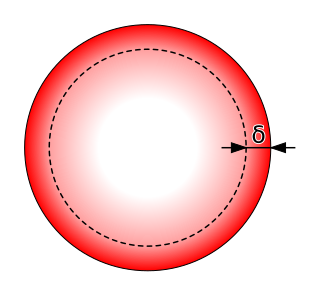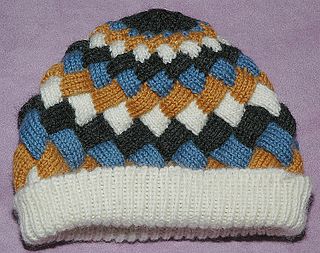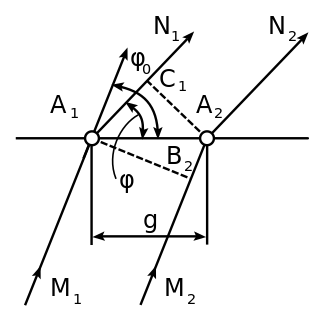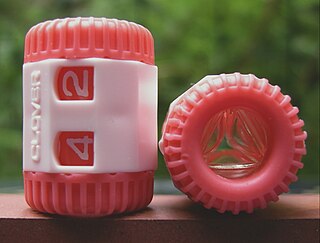Medallion knitting produces flat knitted fabrics that are circular or polygons using a technique similar to the crochet of doilies, by progressively increasing or decreasing the radius.
Knitted fabric is a textile that results from knitting. Its properties are distinct from woven fabric in that it is more flexible and can be more readily constructed into smaller pieces, making it ideal for socks and hats.
In elementary geometry, a polygon is a plane figure that is described by a finite number of straight line segments connected to form a closed polygonal chain or polygonal circuit. The solid plane region, the bounding circuit, or the two together, may be called a polygon.

Crochet is a process of creating fabric by interlocking loops of yarn, thread, or strands of other materials using a crochet hook. The name is derived from the French term crochet, meaning 'small hook'. These are made of materials such as metal, wood, or plastic and are manufactured commercially and produced in artisan workshops. The salient difference between crochet and knitting, beyond the implements used for their production, is that each stitch in crochet is completed before the next one is begun, while knitting keeps a large number of stitches open at a time.
The most difficult part of flat medallion knitting is increasing or decreasing at just the right rate. The circumference of a circle is related to its radius by the formula . Therefore, the number of stitches in a row at radius must exactly equal that circumference times the stitch gauge, if the medallion is to lie flat. If the number of stitches is fewer than this, the medallion will cup at its edges, forming a spherical bowl; if the number of stitches exceeds this, the medallion will frill at its edges, forming ruffles. Therefore, one should measure the radius regularly as the medallion is being knitted and determine the number of stitches that need to be increased or decreased in each round. Rhese increases or decreases should be spread evenly around the circumference.
In knitting, an increase is the creation of one or more new stitches, which may be done by various methods that create distinctive effects in the fabric.

A decrease in knitting is a reduction in the number of stitches, usually accomplished by suspending the stitch to be decreased from another existing stitch or by knitting it together with another stitch.

In geometry, the circumference of a circle is the (linear) distance around it. That is, the circumference would be the length of the circle if it were opened up and straightened out to a line segment. Since a circle is the edge (boundary) of a disk, circumference is a special case of perimeter. The perimeter is the length around any closed figure and is the term used for most figures excepting the circle and some circular-like figures such as ellipses. Informally, "circumference" may also refer to the edge itself rather than to the length of the edge.
If the initial number of stitches were exactly correct and if every row were exactly the same height, flat medallions could be ensured by increasing or decreasing the same number of stitches in every row using the formula
provided that were exactly an integer. This is impossible, since is irrational. Most medallion knitting patterns implicitly assume that this will work, e.g., "increase five stitches per round". However, the knitter's gauges may differ from those of the pattern-maker and may even change with the circumference, and is rarely an integer, so it is usually better to use the method outlined in the previous paragraph.
Here's one plan for knitting a disk: Start with 8 stitches in the first round. Assuming equal stitch heights, the circumference of the second round is roughly twice that of the first round so make one stitch into two stitches, i.e. increase every stitch. The circumference of the second round and third round are in the proportion 2:3 so make three stitches of two (i.e. do an increase after every two stitches. Fourth round to third round is in proportion 4:3 so increase after every third stitch and continue in this manner. You may wish to adjust things so that the increases aren't above each other. In practice a straight knit row is done between each of the rounds above (see Mary Thomas's Book of Knitting Patterns). If one begins with eight stitches the pattern above results in eight increases per two rows, or an average of four increases per row which is the "magic number" for flat circular knitting according to Daniel Yuhas in his book "Knitting from the Center Out".

















